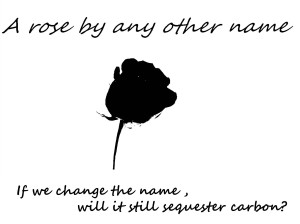Discovery of something doesn’t always lead to quick, practical applications of said discovery. For some game-changing discoveries such as aluminum, practical applications had to wait a few decades for future discoveries (e.g. airplanes) before the real value could be realized. Electricity suffered the same fate. Its transformative power, so to speak, wasn’t readily apparent when the ‘aha’ moment of discovery arrived. Yet in less than a century, electricity moved from an exotic notion to a luxury commodity enjoyed by the few to a desirable one wanted by the masses to something that is often seen as a ubiquitous necessity nowadays.
I suspect biochar is similar to electricity in terms of the lag time between the discovery of the material and its practical application. It is also likely to be as versatile as electricity in terms of practical applications. For various reasons, the adoption sequence of biochar may, however, be the opposite of the adoption sequence for electricity; i.e. rural before urban and developing world before developed world.
As our understanding of the various and variable properties of biochar become better understood, new and unanticipated uses for biochar are likely to emerge. As we learn how to pyrolyze, pre-treat, and post-treat organic matter and see how each of these creates specific physical, chemical and biological properties, new notions for what biochar is capable of will emerge.
The original focus on its use in soils may or may not end up being the most scalable or the most cost effective application for biochar. Mapping the many variables of agriculture (e.g. soils, crops, climate, etc.) to the many variables of biochar (i.e. caused by differences in production, feedstock, etc.), makes accurate generalizations about cost benefit difficult and well, just plain variable!
 I understand that there is a more purist school of thought that would like to limit the use of the term biochar to this particular end use. But what does constraining ourselves to just thinking about this one application, especially if this turns out to be difficult to scale in the short term, really achieve?
I understand that there is a more purist school of thought that would like to limit the use of the term biochar to this particular end use. But what does constraining ourselves to just thinking about this one application, especially if this turns out to be difficult to scale in the short term, really achieve?
For me the critical benefit or end use is its ability to safely, economically and effectively disrupt the carbon cycle. As long as we can prevent absorbed CO2 in plants from returning to the atmosphere, I consider carbonized biomass to be biochar. In much the same way turning downed trees into furniture or homes sequesters carbon at least for decades, turning charred biomass into building materials, mixing it into tires or asphalt, blending it into paper or plastics, all prevents the CO2 from floating upwards where it will help trap more heat down below.
If rapid adoption is the goal, then we may want to take a lesson from the downfall of “King Coal’ to help figure out the best applications for biochar. Coal is being displaced less as a result of beating the environmental drum and more because the financial rug was pulled out from under the industry. Once a cheaper alternative became viable both investors and consumers (i.e. coal plants) started jumping off the coal bandwagon in droves and beating a path to (unfortunately) fracked gas and (fortunately) renewables.
Similarly carbonized biomass whose price point will start to fall as output rises, could very likely displace all sorts of expensive, non-renewable, toxic or high carbon footprint products (e.g. activated carbon, carbon black, vermiculite, etc.).Those on the hunt for biochar killer apps, IMHO, should caste as wide a net as possible and not limit themselves to just what biochar can do beneath our feet. Filtration, remediation, battery storage, building materials, and many, many more applications – all of these and more are fair game for biosequestration opportunities using charred organics.

